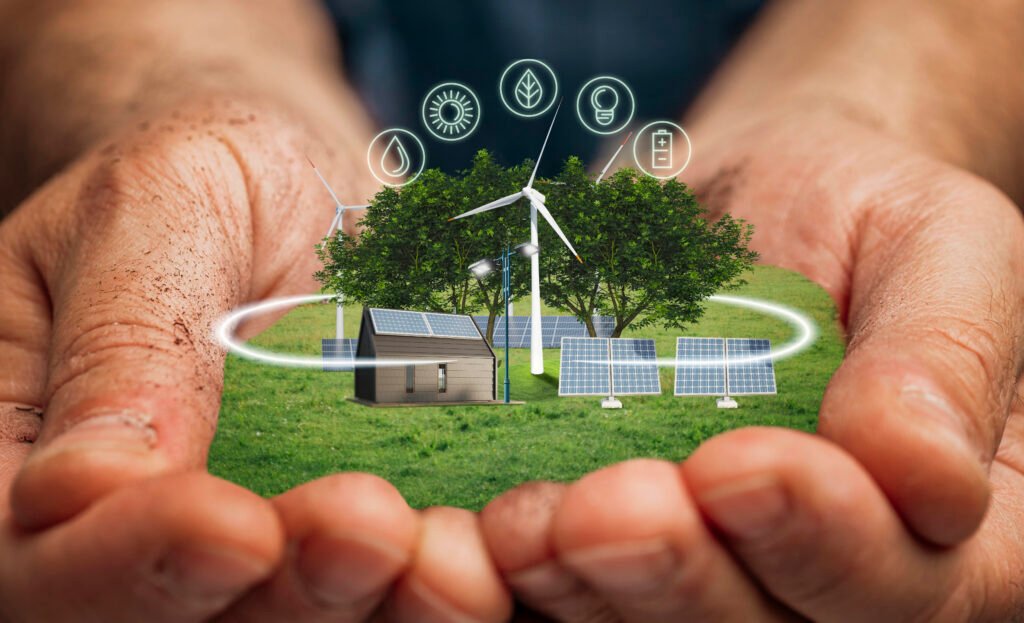Introduction to Energy Harvesting
Energy harvesting technologies offer a promising avenue for extracting power from the surrounding environment to power various devices and systems. Unlike traditional energy sources like fossil fuels or batteries, which have finite capacities and require periodic replacement or recharging, energy harvesting taps into renewable sources such as sunlight, heat, motion, or vibrations to generate electricity.
This approach not only reduces reliance on conventional power sources but also enables greater autonomy and sustainability in powering electronic devices and systems.
The concept of energy harvesting is rooted in the principles of converting ambient energy into usable electrical power through various mechanisms. By harnessing readily available sources of energy in the environment, such as solar radiation, temperature differentials, mechanical vibrations, or electromagnetic fields, energy harvesting technologies can provide a continuous and renewable power supply for a wide range of applications.
In recent years, advancements in materials science, engineering, and electronics have fueled the development of increasingly efficient and compact energy-harvesting devices.
These technologies have found applications in diverse fields, including wearable electronics, wireless sensor networks, environmental monitoring systems, and remote sensing devices.
However, energy harvesting also presents unique challenges and limitations, such as variable energy availability, limited power output, and efficiency considerations.
Addressing these challenges requires interdisciplinary approaches and innovative solutions to improve energy conversion efficiency, optimize system design, and enhance energy storage and management capabilities.
Despite these challenges, the growing interest and investment in energy harvesting technologies underscore their potential to revolutionize the way we power electronic devices and systems.
By harnessing the abundant energy sources present in the environment, energy harvesting offers a sustainable and decentralized approach to meet the growing demand for power in an increasingly interconnected world.
Principles of Energy Harvesting
To understand how energy harvesting technologies work, it is essential to delve into the underlying principles of converting ambient energy into usable electrical power.
These principles vary depending on the type of energy source being harvested and the specific conversion mechanism employed.
However, the fundamental concept involves the transduction of energy from one form to another, ultimately generating electrical power that can be utilized to power electronic devices.
Overview of Energy Sources:
Energy harvesting technologies leverage a wide range of ambient energy sources available in the environment. These sources include:
- Solar Energy: Capturing sunlight through photovoltaic cells or concentrated solar power systems.
- Thermal Energy: Harnessing temperature differentials using thermoelectric generators, pyroelectric materials, or other heat conversion methods.
- Mechanical Energy: Harvesting kinetic energy from motion or vibrations using piezoelectric materials, electromagnetic induction, or other mechanical conversion mechanisms.
- Environmental Energy: Extracting energy from ambient sources such as radio frequency (RF) signals, ambient light, or magnetic fields.
- Conversion Mechanisms: Energy conversion mechanisms vary depending on the type of energy being harvested and the desired output.
Some common conversion methods include:
- Photovoltaic Conversion: Solar energy is converted into electrical power through the photoelectric effect in photovoltaic cells, generating a direct current (DC) output.
- Thermoelectric Conversion: Temperature differentials are converted into electrical power using thermoelectric materials that produce a voltage when subjected to a temperature gradient.
- Electromagnetic Induction: Mechanical motion or changes in magnetic flux induce an electromotive force (EMF) in coils of wire, producing electrical power through electromagnetic induction.
- Piezoelectric Effect: Mechanical stress or vibrations applied to piezoelectric materials generate an electric charge, which can be collected and stored as electrical power.
- Efficiency Considerations: Efficiency is a critical factor in energy harvesting technologies, as it directly impacts the overall performance and viability of the system.
Key considerations for improving efficiency include:
- Maximizing Energy Conversion: Optimizing the design and materials of energy harvesting devices to maximize the conversion efficiency of ambient energy into electrical power.
- Harvesting Techniques: Implementing advanced harvesting techniques such as maximum power point tracking (MPPT), impedance matching, and energy storage optimization to enhance overall system efficiency.
- System Integration: Integrating energy harvesting systems with low-power electronics, energy storage devices, and power management circuits to minimize losses and improve overall system efficiency.
By understanding these principles, researchers and engineers can develop innovative energy-harvesting technologies that efficiently capture and utilize ambient energy to power a wide range of electronic devices and systems.
These advancements hold the potential to drive the widespread adoption of sustainable and self-sufficient energy solutions in various industries and applications.
Types of Energy Harvesting Technologies
Energy harvesting technologies encompass a diverse range of methods and devices for extracting energy from different sources in the environment. These technologies leverage various physical phenomena and conversion mechanisms to capture and convert ambient energy into usable electrical power.
Understanding the different types of energy harvesting technologies is crucial for selecting the most suitable approach for a specific application and optimizing energy harvesting efficiency.
- Solar Energy Harvesting: Solar energy harvesting is perhaps the most well-known and widely adopted form of energy harvesting. It involves capturing sunlight and converting it into electrical power using photovoltaic cells or concentrated solar power systems.
- Photovoltaic Cells: Photovoltaic (PV) cells, also known as solar cells, directly convert sunlight into electricity through the photovoltaic effect. These cells are typically made of semiconductor materials such as silicon and generate a direct current (DC) output.
- Concentrated Solar Power (CSP): CSP systems use mirrors or lenses to concentrate sunlight onto a small area, where it heats a fluid to generate steam and drive a turbine, producing electricity.
- Thermal Energy Harvesting: Thermal energy harvesting utilizes temperature differentials to generate electrical power through various heat conversion mechanisms.
- Thermoelectric Generators: Thermoelectric materials generate an electric voltage when subjected to a temperature gradient, allowing them to convert heat directly into electrical power.
- Pyroelectric Generators: Pyroelectric materials generate an electric charge in response to changes in temperature, enabling them to convert thermal fluctuations into electrical energy.
- Mechanical Energy Harvesting: Mechanical energy harvesting technologies capture kinetic energy from motion or vibrations and convert it into electrical power.
- Piezoelectric Materials: Piezoelectric materials produce an electric charge in response to mechanical stress or vibrations, allowing them to generate electrical power when mechanically deformed.
- Electromagnetic Induction: Electromagnetic induction utilizes coils of wire and magnets to convert mechanical motion or changes in magnetic flux into electrical power through electromagnetic induction.
- Vibrational Energy Harvesting: Vibrational energy harvesting focuses specifically on capturing mechanical vibrations and converting them into electrical power.
- Resonant and Non-resonant Methods: Vibrational energy harvesting can be achieved using resonant or non-resonant methods, depending on the frequency and amplitude of the vibrations.
- MEMS-based Harvesting Systems: Microelectromechanical systems (MEMS) offer compact and efficient platforms for vibrational energy harvesting, enabling the integration of energy harvesting capabilities into small-scale devices and systems.
By leveraging these diverse energy harvesting technologies, researchers and engineers can develop innovative solutions for powering electronic devices and systems in a wide range of applications.
Each type of energy harvesting technology offers unique advantages and challenges, making it essential to carefully consider the specific requirements and environmental conditions of a given application when selecting the most appropriate energy harvesting approach.
Applications of Energy Harvesting Technologies
The versatility and sustainability of energy harvesting technologies make them well-suited for a wide range of applications across various industries.
By harnessing ambient energy sources in the environment, energy harvesting technologies enable the development of self-sufficient and autonomous electronic devices and systems.
Some key applications of energy harvesting technologies include:
- Wearable Electronics: Energy harvesting technologies are increasingly being integrated into wearable devices to provide continuous power without the need for frequent recharging or battery replacement.
- Wireless Sensor Networks: Energy harvesting technologies play a crucial role in powering wireless sensor networks deployed for environmental monitoring, infrastructure management, and industrial automation. These networks often operate in remote or inaccessible locations where traditional power sources are impractical.
- Internet of Things (IoT) Devices: Energy harvesting enables the development of IoT devices that can operate autonomously and communicate wirelessly without the need for external power sources or frequent maintenance.
- Environmental Monitoring Systems: Energy harvesting technologies are used in environmental monitoring systems to collect data on air and water quality, wildlife habitats, and ecological changes in remote or harsh environments.
By integrating energy harvesting technologies into these and other applications, researchers and engineers can develop innovative solutions that reduce reliance on traditional power sources, minimize environmental impact, and enhance the sustainability of electronic devices and systems.
As energy harvesting technologies continue to advance, their adoption is expected to grow across a wide range of industries, driving the development of more efficient and autonomous electronic devices and systems.
Challenges and Future Directions
While energy harvesting technologies offer significant potential for sustainable power generation, they also face several challenges and limitations that must be addressed to realize their full impact.
Overcoming these challenges and exploring future directions for energy harvesting technologies is crucial for advancing their development and widespread adoption.
Some key challenges and future directions include:
Energy Storage and Management:
One of the primary challenges facing energy harvesting technologies is the efficient storage and management of harvested energy. Energy storage devices such as batteries or supercapacitors must be integrated into energy harvesting systems to store excess energy for use during periods of low ambient energy availability. However, improving the energy density, efficiency, and lifespan of energy storage solutions remains a significant area of research and development.
Scalability and Integration:
Scaling up energy harvesting technologies to meet the power demands of larger and more complex electronic systems poses challenges in terms of efficiency, cost, and scalability. Integrating energy harvesting systems into existing infrastructure and electronic devices requires careful design considerations to ensure compatibility, reliability, and optimal performance. Future research efforts are focused on developing scalable and integrated energy harvesting solutions that can power a wide range of applications and devices.
Environmental Considerations:
Energy harvesting technologies must also consider environmental factors such as weather conditions, location, and ambient energy availability. Different environments present unique challenges and opportunities for energy harvesting, requiring customized solutions and deployment strategies. Additionally, the environmental impact of energy harvesting technologies, including manufacturing processes, materials usage, and end-of-life disposal, must be carefully evaluated to ensure overall sustainability.
Emerging Trends and Innovations:
Advances in materials science, nanotechnology, and manufacturing techniques are driving innovation in energy harvesting technologies. Research efforts are focused on developing new materials with enhanced energy conversion properties, improving the efficiency of energy harvesting devices, and exploring novel approaches to energy extraction and storage. Emerging trends such as the integration of energy harvesting with artificial intelligence (AI), Internet of Things (IoT), and wireless communication technologies are also shaping the future of energy harvesting applications.
By addressing these challenges and embracing emerging trends and innovations, energy harvesting technologies can continue to evolve as viable and sustainable alternatives to traditional power sources. With ongoing research and development efforts, energy harvesting has the potential to revolutionize the way we generate and utilize electrical power, paving the way for a more sustainable and energy-efficient future.
Conclusion
Energy harvesting technologies represent a transformative approach to power generation that holds tremendous promise for addressing the growing demand for energy in a sustainable and environmentally friendly manner.
By harnessing ambient energy sources present in the environment, such as sunlight, heat, motion, and vibrations, energy harvesting technologies enable the development of self-sufficient, autonomous, and eco-friendly electronic devices and systems.
Throughout this discussion, we have explored the principles, types, applications, challenges, and future directions of energy harvesting technologies. From solar energy harvesting and thermal energy conversion to mechanical and vibrational energy harvesting methods, a wide range of technologies offer opportunities for powering wearable electronics, wireless sensor networks, IoT devices, and environmental monitoring systems.
However, realizing the full potential of energy harvesting technologies requires addressing key challenges such as energy storage and management, scalability and integration, environmental considerations, and embracing emerging trends and innovations.
By overcoming these challenges and leveraging advancements in materials science, engineering, and electronics, energy harvesting technologies can play a pivotal role in advancing sustainable energy solutions and driving the transition to a cleaner and more resilient energy future.
As research and development efforts continue to progress, energy harvesting technologies are poised to revolutionize the way we generate, store, and utilize energy, leading to greater energy independence, reduced environmental impact, and enhanced quality of life for people around the world. With collaboration, innovation, and a commitment to sustainability, energy harvesting technologies can pave the way toward a more sustainable and prosperous future for generations to come.












